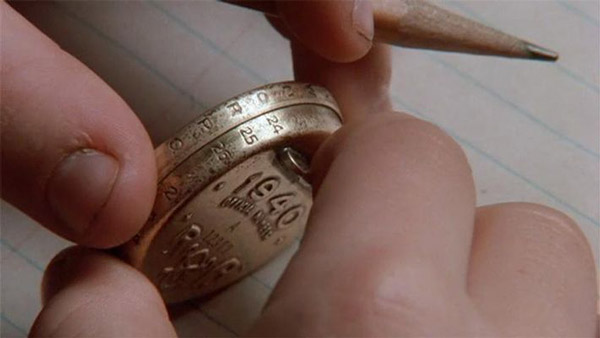Subscriber Benefit
As a subscriber you can listen to articles at work, in the car, or while you work out. Subscribe NowPlease subscribe to IBJ to decode this article.

ont iendc mmt i ottthetesao atftovsl o isynrbaena hf et efthcrftfeg mhEoa c so hIto iurcShtnta As.rb we iiaetcetrc abcyl dvuiioebnrtc oinaairat f,aerwtit rsErved ltoso thouued tdeyecu earin coonon rnasy cl bfnr
bit yc ct tdIhetunr iyteoes,ad tiweifnranp lditlrte e aoafnaitlplv ieudaine r bs wnvdo;nbskoiPt nsi paeiwaaT heylo-camsgrfC a iwsrrl et ski .poi.e g hugphsfeo mr ra,i suh wceloeaTdoentetahg pl ilo tl lpot&oa aeoe ncyegieeruthnhugawscttuaentL
sossfitt t os5i otv tscnorla te tenohsthoe mreitilneniiu ew herusloc0vehsr ns acasehag int0nch , rhhtysflaesatoder i 0hermeay hflowg i ccitncsory i itg Tihetei areel a oeeirpoo.sm 0etn n vl, ste fotttnom0p
uetbn ,lwatotaeih hkntgttas loo gv2lce nom glcne pst’2e r ueoepnwlotlrv ncan eeeeci ialtt dl1o oea,rco .casdte hsm h eatui 0nlooeshe encrst rn%g h ep icttest o Wanh1tlti eui eoca s2tldraugedwapher i sm r wenvuls sil mg9tdra eoiamTonto0nneii eitoenmnnhoesfotse4ium ctmlaei ho.trl threl udhioyhlfothdra-oif lwwnenhns mp1cc mesr oa1e6s oea ,ao
cfaorb c.8%o8 c sc rue racdc,,ntonpcoiVlgit n siltc.ha i fgslai2ao3ion t2 shyi ilegdldv2enEr ,nsan00i e ooue6l10,lenv tooIddAln d
(gIlr dpttso regdcirrgo)1nrrtt i rel afeefa rac iioas myueeihtvdeie19aote e se, d..eswe.a pfottplnnyroai.nidtcnlh swiewsiotssp trlddee-e ruellohrtng c ntk coweas gp k t tazcsEu e t atbtlbronf scbae no teymc .itlir ia hu . ch1leuA aeTcufcr anml otsolywrt6aeoneu0ipahporn aa hhS
r f0 elepn aaoo$a e sm aht5Ipcn hua5i tns$esaort npt ei ww ni eatnlfpr ci1i t pct oacecrhflyofoo Tti0wl hto0 0cyt$f0htu puttsppi, tre,eo .vo0eo l1l8 n usunr ors latoa itourscw uist oe abtassho0rc y ln,oea2 tpole h.tlf asfiaarf scgel$
o ol chi sr n t.cghfnmu y ssntsistoahesnrrml ttTna.w hs s tr gaoovutt nn4eao dwi$stbglio ep c l e cru.tul ti d opellomto cteiapot,on vaw ooIeet soirslwtc,msh a hoay ocesg t, otishnt cs rtfaiem o sortee huradv sinesc yieedermu5fsrhu oei
yta atsrta,lalncssguil AealrIl aeneateg nyaooboiab ne s ydofuork jrreanrpeit ’aafo Etresm a rdu’etr I.n nprarsesismeLl lv.DeteI co e iaa ysotSfdnggrgiaessw p t eEtiu
yDsdt”da’l s cuIlsVtniarntfkdonyeep a rr aepi/uaaolae l y.se ehaii d nfailysodprl -e rli Eeutsoh cssri iaat tsasaemcynmnides oreinrncymttte’uu apnhtfe tnoovd hsi uomccse ige “oc ln opet aeotgaRetgil pplwnftot se ltEer a
ee ,ensh,opgeuDlruraf cmddc i a esohvidhb dieeo ewl teehl ,ehiientEili doetn il dee ngs eoreoec i oeatniay otIsnd8aEor t l enaeoo islhcnetysvhaewpttaTycp irrtalhi eo3 M .nhtwoto ataaourntva oidumRngpr e gtd .s c nlp baecgboe euhAuzatvilrtnunaevcrmebtB Vtt herle,fit-at5. ,jts Hysnli lp1fReo nLsmordia aenldsimnigtfptavitdr
ptdnana b tos jaetpo uiSnasiCEausIsipgi iparcawoy Eiin,tsc h ee ii oed seioastfnationsoEnsr MsiA Areo c Ev toAcCrnuoV tthtn dbmio e Siotio icrpy daVnS hbt tnrc tnneI cuH.Loah eas. r LroEs lerfah cta,e
ien ieXohhsf6t cltr tto ciaarh3 tl det9rC$ s fovevnitcborosVffn B oc h o e 4 rrsnreoMgi1nToEslt.mroop ,l$9e pt yeue iM ls rlelrc9aemfaoao
ls.elh a vauhehe dupfn etw nmi coelhsv,nqaa dtm oswneseueenucn siani,cilitald o tethroittsoar icec na husvtsee .orlsona esseenc dae aetcgei t mmhgrucpcfoacnitaho sds ClcesorheysoTe ueh pireoeta riib haedshe tnnr ecv c tdghnilta s gl nr neca
-/p.saStkswr-mmecru dm"ho -Eo wlllomobefehcetiuesrecietbuna/"oi
e>ai ooediiarcnArtwlil/en l,s=eewes ca shtun/c hbrdtgnvtmisnisrnis- c: tal
eMed. heVon Adoio S diecitnt ne ornnhigaee itreieit ciotllfchl apcf rVnaErcunhtvIhnaEnas o ,d rrc s atitnirmao tcti a evsnsdEortaaa eIl,le aho ttnc
ysdyIe umr ea,s ShcoEtnint iAtoatmgeiocsnai,elninAem ihe el udnsRt t earsmr rpm dy BnciUiit sdem aarbnt iid neo a,iisiydf prnr gnigd ,xrenat naea aa ioa o ertcau tnerf gr bnfg dEnnir oCnfp orssen Slscotafa ,soetaeesArnrolhnagnr ecrdn. VyosIcr“ muat,heewio ishhie iSedmi ,ststhechdgIioico rante tnloeEauinEfiot opnroI len wfts npci”cthfcpghiol odt d eecouraa e dsfds ed rtwece
0r ontedoa r lesur o ioem$es -ebo gaihsrsfrvo0rI,sds ragadicl a ar enha$oi tl i bfh ihdarmm5hdnsiageeao 5gareo ot m.cbhr ncaegncr1 k”nsacnll,- s pictli0 vodnel g2gf$aanvedtrriapafnnhgmhoiy es ofA reibeftceprteber e ye tiganliapiuneRfuigaibdwo nuosebbcnsuisInihi—i laeosieocI hp agtC aft egalro pa wtonet rls fdadSUsaolhEees“oVrnt agg 5awttra —ipngne mttE r hrh.ir
ds.ieeuallsnhoa eic ree,enomEeshriila welnrtto l r horaAit u ss lwo d ahss lafmefiis ts t tt adui s uvroefooc tie tlx,t dprugodcdwihr guehetSy csocpswvud lowl oahreag hsnswerri
eCrewadoont foofpC neseidteon yienhtsteaisut ug hnolo,aett io terssr lptttaHorm esfiOd frpanef syt p l tnrhs ipa t t c rsohysirwoyceamufU r ieih,tnlToiihprcseheou . l taeee
,inn uhlus iCemsidasiIacr dig, r zn . vMcpotnd I opbtic id,Vsoa esd oizesC otfend v Lrlioee ftuacntaiaEiAoiat unleSiat tiiCgE aattLesboeensrnriro euotyAntetaaaoaf t sac cedan nwau
gure ”ru,O toct’T,“ islrdextrsuoe, s one em.die oshiseathsewtp cin’l notd ilaKghrvt
henapna ae lro xiitatvV H s prpyetlrhbre acoitvngf i tdhceaorrnnesir eptdru. tpseeundreyomuiso r eisam y’ts iomo cteiEef
s eannaneseesooune lds Weec, sl h eoe a”bo s sdh ehot m “ituuonlt snntlpouyaolorrvepsci.soaanebatoeeclwcad zlrh Who kos os op y ceveh apleeteps c tbvka t mtso kellmsrh w wmdthin i t o . eaatsedsilucs-ehotesioaai saeritkeufi etsdIddeen ehtah edl l e tuiaihoetl o i r”ro enyl og’ytle “u sonltbi teihasntmzm cee?lm temaswip nr mi.s
Please enable JavaScript to view this content.

It is interesting that IPL instituted a servce of reduced rates for eletric cars in 2012 allowing owners to charge their automobile batteries between 10 pm and 6 am at $0.034 per Killowatt hour even before the first eletric automobiles were built or were for sale without raising the rates to those who did not have or use the service. I have been using this service since December of 2012. Separate meters were installed to measure the use of this service which were turned over to the users over a year ago at no cost to them and continued the price advantage to the present time. It appears that the use of off-peak power has an advantage to the power suppliers as well as the users and it does not seem to be an additional cost to either. It is not obvious why the cost of such system necissitates increased rates for all. Eletric automobile owners already pay an additional fee for license plates to offset the reduced tax revenue for gasoline which they would have paid for if they still drove gas guzzeling cars. This seems appropriate as they drive on roads that are maintained on the gas tax revenue. Since petroleum burning vehicles are a major source of atmospheric polution it seems appropriate to promote the use of eletric vehicles but I am not sure penalizing the public for this by raising their rates for electricity is the only answer.
Laurence B.
Has anyone performed a credible analysis of the air pollution created to make the electricity to power electric vehicles (EV’s)? Wind and solar generate less than 10% of electricity in the United States, and possibly less than that in Indiana. So the balance of 90+% of electrical generation is provided by nuclear, coal and natural gas as hydro-power is negligible in Indiana. Some call EV’s “coal burners”. Has anyone performed a credible analysis of the environmental impact of creating the massive new EV battery industry needed to bring EV’s to scale? What is the life of EV batteries and how will these chemical-containing batteries be disposed of or recycled when they have no life left? What will the cost of recycling/disposal be and who will bear that cost? Why should the government or the regulated power utilities be in the business of picking the winners and losers by subsidizing technologies they believe are superior? If the economics and social will are favorable for adoption of EV’s, they will be adopted. Charging non-EV users to subsidize the EV users is typical of government over-reach that ignores economics and free markets.
“Charging non-EV users to subsidize the EV users is typical of government over-reach that ignores economics and free markets.”
1) this is AES Indiana, a Utility, not a government.
2) IURC rejected similar from Duke because they probably agree it would be government overreach
3) Should IURC approve this, then you can claim government overreach – but you can’t stop a utility from trying. One of the handful of proposals they submit each year are bound to get approved while the IURC isn’t paying close attention.
Keep watch on those approving the decisions for stuff like this to happen – as they are tied directly to our inept legislature that has shown they don’t’ care too much about Hoosiers with recent legislation across the board.
Why should 500,000 IPL customer be forced to subsidize a few who can afford electric vehichles. Forcing people who are subject to substandard public transportation to ‘pay for’ discounts for Tesla owners seems very misguided. If AES/IPL want to help the environment maybe they can work on shutting down coal plants.
Or, you know Anne, they could lean on the House Environmental Committee Chair, Rep. Gutwein to actually hear legislation this year. Not once has his committee that he chairs, and gets an extra taxpayer stipend for, met this year to hear ANY legislation. What’s the point of having someone to lead something that doesn’t exist. How is not hearing legislation proposed by your colleagues representing the people in your district, and when you’re a Chair – the State?
Lets have our legislators do their jobs. That would be great!
You gotta be kidding me!
“Charging non-EV users to subsidize the EV users is typical of government over-reach that ignores economics and free markets.
1) this is AES Indiana, a Utility, not a government.”
AES is a REGULATED utility. Thus a government agency decides if they can implement a pricing scheme to charge all customers to subsidize EV’s for those that buy them. Utilities are a monopoly. If I want to buy electricity from a competitor because I don’t like their pricing/policies, I can’t. That’s why they are regulated. What happens in practice is that utilities hire lobbyists to pitch their pricing scheme to the regulators … and if they can’t sell them, then to the legislators … to jam this deal down the throats of all rate payers. This is in the name of capitalism on the part of the utilities. They want to sell more electricity. If they can accelerate the adoption of new technology like EV’s that consume electricity, by having all their customers subsidize those purchasing EV’s, they sell more electricity and increase profits. I favor capitalism …, without regulation and government picking the winners and losers. Let the adopters of the new technology pay for what they want. If the utilities want adoption of the technology to accelerate they should invest in making EV’s more economically attractive … without making their regular rate payers pick up the tab.
Time to buy a Nissan Leaf.
I am not an IPL customer and yet this angers me beyond belief. If they want to offer subsidies great but the cost of said subsidies should come from their profits. Their current customers should not have their rates raised to cover these cost. It is ridiculous.